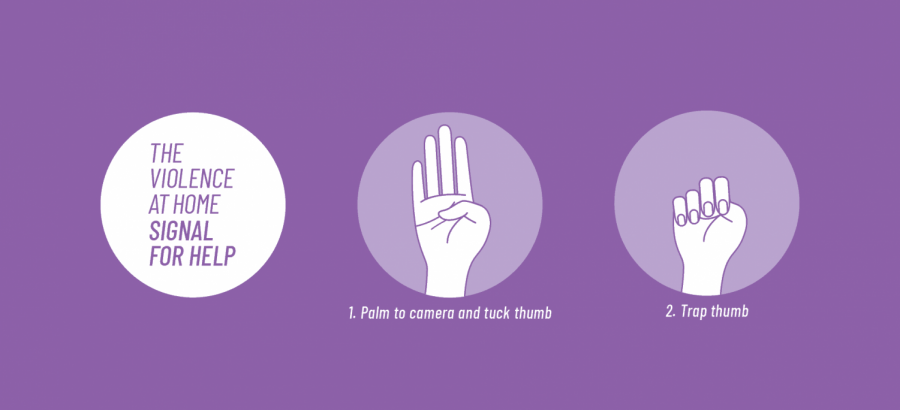Signaled to safety
TikTok symbol raises awareness about teen safety
Canadian Women’s Association provides a discrete hand gesture to signal for help.
November 16, 2021
A driver on Interstate 75 in Kentucky dialed 911 after seeing a 16-year-old girl make a hand symbol for domestic abuse through the window – a life saved because of TikTok.
The girl was kidnapped by a 61-year-old man in Asheville, N.C. She signaled to the driver that she was in distress by raising one hand, with the palm facing out, and folding the thumb in. Then, she folded the other four fingers over and released.
This story, which made national headlines, now raises the question; how can teens stay safe?
“Anytime you have something that other people might recognize, especially in a nonverbal way like this one, that can definitely be helpful,” Student Support Specialist Lisa McGinnis said. “It is funny in some ways that it was on TikTok, but obviously it’s a popular format, and social media is the way you get things out nowadays.”
The Canadian Women’s Foundation created the signal in 2020 because of COVID-19.
“Public health directives on home isolation compound the danger for those living in abusive situations, and abusers may monitor their devices to ensure that what is going on inside the home is not shared,” said Paulette Senior, president and CEO of the Canadian Women’s Foundation in an April 2020 press release. “This new reality requires new methods of communication to help those facing gender-based violence.”
Rachael Harwell, Smithson Valley graduate and current Special Agent for the Criminal Investigation Division, Department of Public Safety, Laredo division, urged young girls and women to travel in pairs to ensure safety.
“At the very least, when traveling, someone should be aware of his or her travels with regular check-ins made throughout,” Harwell said.
Student Council also works on ways to keep students safe on and off campus.
“Our health and safety as minors is extremely important,” student council safety and health chair Ryann McAnelly said. “This is a time of growth, but it also comes with mistakes. Those mistakes could be fatal.”
The committee plans to put up signs in the girls restrooms to raise awareness about student safety.
“My committee strives to educate everyone on relevant issues,” McAnelly said, “whether it’s COVID updates, proper nutrition, or even more serious matters like this one.”
Raising awareness about serious issues extends beyond the students.
“I think having adults that work with kids be aware of what’s happening can be a huge factor in recognizing what’s going on,” McGinnis said. “I think anyway we can put it out there, any advertisement for that information is good.”
Local officials also raised concerns about a recent rise in human trafficking in surrounding areas, especially on the Interstate 35 corridor.
“This year, our district has had a lot more training on what is called human trafficking,” McGinnis said, “which basically is people who are getting into these kinds of situations where they’re being used in ways that they did not intend.”
Not only should students know how to keep themselves safe, they should also be able to recognize when their peers are in danger: reclusiveness, physical signs of harm, and actual cries of help.
“To be a solid foundation, a safe space, for someone to come to and express their feelings is an asset most have lost touch with,” Harwell said. “If we watch and listen with intent to help, I think safety and signs of abuse can be caught much earlier.”


